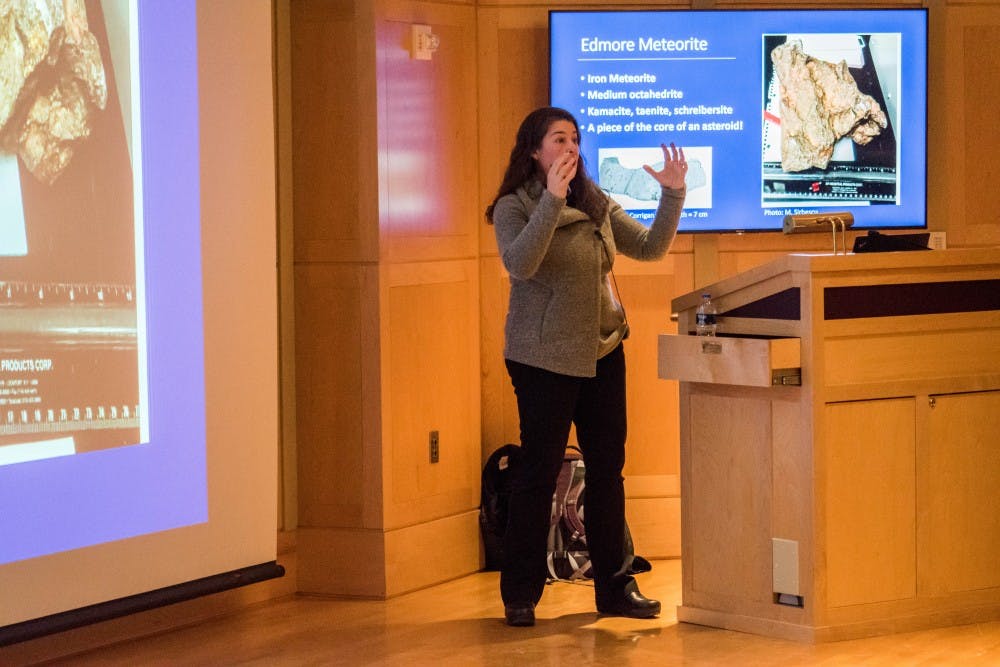CMU hosts Edmore meteorite found in Michigan

Smithsonian National Museum of Natural History geologist and curator Catherine Coorigan speaks about the finding of the Edmore Meteorite of Michigan as well other work she does with meteorites at the Charles V. Park Library on Feb. 28.
The Edmore Meteorite, verified and officially named last year after it was brought forward to be tested by a couple from the Grand Rapids area, was at Central Michigan University Feb. 28 and received by a crowded Charles V. Park Library Auditorium, filled mostly by students.
Accompanying the meteorite was Catherine Corrigan, who gave an hour-long presentation titled “The Edmore Meteorite: A new piece of the Solar System puzzle," along with background information about the study of meteorites including their classification and different methods of discovery. Corrigan is a geologist and the curator of the Antarctic Meteorites Smithsonian National Museum of Natural History.
A Michigan native, Corrigan has had the chance to work with three of the 12 meteorites found in the state of Michigan including the Edmore Meteorite. She traveled twice to Antarctica, spending six to eight weeks each time searching for meteorites with a small team of fellow volunteers where her days consisted of driving snowmobiles across the frigid desert hoping to find another meteorite.
“At the beginning it’s really daunting,” Corrigan said of her Antarctic excursions. “Being left alone by that plane is terrifying. You know they’re going to come back a few times during the season to bring supplies, but you just think ‘I am at the bottom of the world’.”
Deserts, like Antarctica, are ideal places to look for meteorites because there is little to no plant life to obscure the meteorites. Antarctica is a particularly good place to find meteorites because its extremely cold temperatures help preserve the meteorites.
Department of earth and atmospheric sciences faculty Mona Sirbescu initiated the event.
“This is the second meteorite that has actually been unraveled, completely documented, and gone through the entire nomenclature process,” Sirbescu said when asked if CMU has helped identify other meteorites. “The first one was the Coleman Meteorite, and that one was in fall of 1994.”
The Edmore Meteorite, measuring about a foot in length, is composed mostly of iron and is thought to be a piece of an asteroid core. It was discovered after it had fallen to Earth, unlike other meteorite discoveries that occurred because the meteorite fell through, for example, a ceiling.
Hartland senior and geology major Kailey Gray attended the event to learn more about meteorites.
“I personally don’t know a lot about meteorites, so having this here and having my professors be involved in this was a really cool opportunity,” Gray said. “It was a good learning experience.”
After the event, Corrigan and Sirbescu spoke with individual attendees and answered their questions about meteorites.
“It’s like a tradition,” Sirbescu said of searching for meteorites. “You just need to pick them up before they weather away.”






